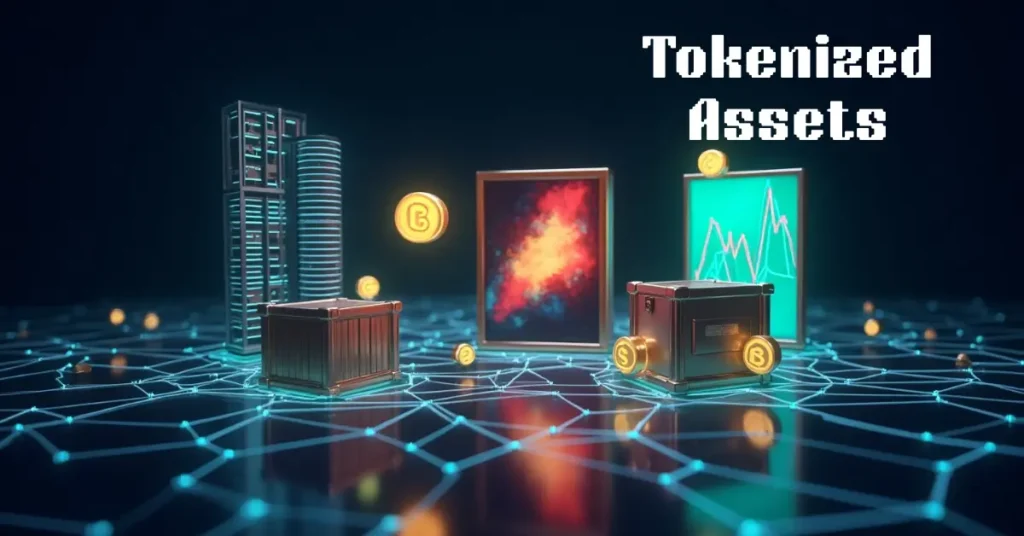The Rise of Tokenized Assets: How Crypto Is Redefining Real-World Ownership

The emergence of blockchain technology has launched a transformative revolution in distinct industries, mainly in the way tokenized assets are traded, represented, and transferred. The blockchain technology growth is forcing companies to reshape their management strategies and traditional methods, with the rise of tokenized or real-world assets tokenization presenting a significant change to optimize the process of transactions and redesign the value chain.
Let’s know more about Tokenization and its related aspects. The current article will explore how crypto is reshaping real-world ownership in association with the rise of Tokenized Assets.
What is tokenization?
Tokenization is the process of repositioning sensitive data with a distinctive, non-sensitive identifier named a token. The term tokenization can also be described as the process of developing a digital representation of a real aspect. The tokenized assets are the digital illustration of that special asset, mainly indicated as a claim to a part of the asset and as a digital certification of ownership.

The tokenization asset is related to the term tokenization; it is a certain application of the tokenization where the asset being tokenized is a financial or a real-world asset. The emergence of real-world asset tokenization is changing the traditional investment market by inventing new innovative opportunities in industry beyond Finance. Let’s look at some of the real-world examples of tokenized assets in the current competitive market.
Tokenized assets and real-world Examples
In the last few years, the real-world asset (RWA ) tokenization has risen as one of the superior narratives of the crypto landscape. Some of the real-world examples of the tokenized assets are given below.
Financial Instruments
Tokenized assets are essentially influencing financial instruments by launching different important variations and key advantages to the existing financial space. Organizations are declaring security coins, describing shares in their firms, that can be exchanged on a blockchain-based, regulated landscape.
Collectibles and Arts
The fine art market, famous for its transparency lack and exclusivity, is being developed by tokenization. High-value collectibles and artworks can be tokenized by offering fractional ownership and showing this market to a large audience. It boosts liquidity and offers verifiable provenance. Non-Fungible Tokens are also utilised to show ownership of distinctive pieces of digital collectibles and art.
Real Estate
Tokenization activates properties’ fractional ownership, helping investors to trade real estate assets. It enhances liquidity and also helps investors to distinguish their portfolios across various locations and property types. Projects have progressively tokenized luxury properties, helping investors to purchase digital shares, highlighting ownership.
Supply chain management
In supply chains, the tokenization includes developing blockchain-based equivalents of files or goods, such as shipments, inventory, and invoices. Tokenization also helps to improve proficiency, enhances traceability, and decreases illegal activities by offering immutable records and real-time tracking in supply chain management.
Intellectual property
Tokenization in intellectual property empowers royalty payments and licensing. Copyrights and patents can be tokenized, helping developers to sell or license them more safely and efficiently.
How is tokenization redefining real-world ownership?
The advent of blockchain technology helps in filling the gap between the decentralized digital economy and traditional finance by providing a more transparent, accessible, and potentially liquid approach to owning and investing in a broad range of digital assets.
Tokenization reduces the complexities linked to capital requirements into smaller, more affordable digital assets, making them obtainable for a wider investor or trader base. The ease and accessibility of cryptocurrencies help traders or investors to invest in a piece of a popular painting, a portion of a huge value bond, a fraction of a commercial building, and to open up the investment opportunities previously reserved for companies or the ultra-wealthy.
Tokenization transforms traditional assets like art or real estate into digital assets, which can be traded more efficiently on secondary markets.
Tokenized markets can function 24/7 by removing the restrictions of traditional market hours and activating real-time responses to market variations. The advanced technology in the crypto market (blockchain technology) offers an immutable as well as transparent record of entire transactions and ownership transfers, boosting trust and decreasing the difficulties of criminal activities.
The transparent nature of Blockchain can significantly reduce the necessity of intermediaries like escrow agents, notaries, and brokers, which can lead to decreased charges and enhanced efficiency. However, the tokenized assets can be traded and accessed, developing the market beyond regulatory restrictions and geographical boundaries.
On the contrary, despite these advantages, tokenization encounters various challenges involving Liquidity concerns, regulatory uncertainty, market awareness, and adoptions, security and technological limitations, a great initial setup charge, and Enforceability and legal recognition.
Bottom line
The tokenized assets are anticipated to play a relevant role in the future of finance as the regulatory clarity improves and technology matures. The rise of tokenization in real-world assets is democratizing access to investments, effectively streamlining asset management procedures and enhancing security as well as transparency in ownership records. However, apart from the challenges linked to regulation and custody, the tokenized assets have a relevant role in the real-world ownership, and their efficiency is increasing day by day due to the ongoing technology development and evolving regulations that will likely drive.
Crypto & Blockchain Expert
